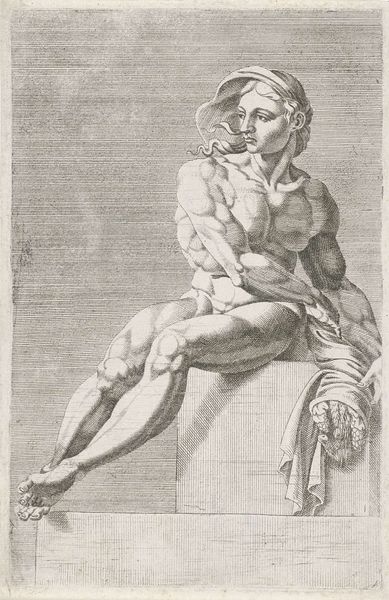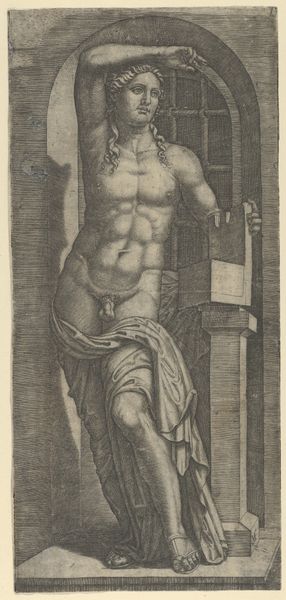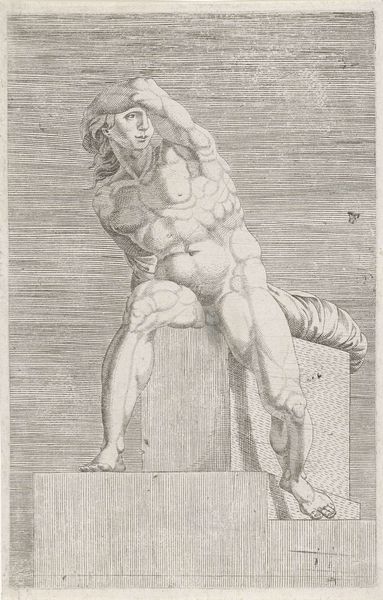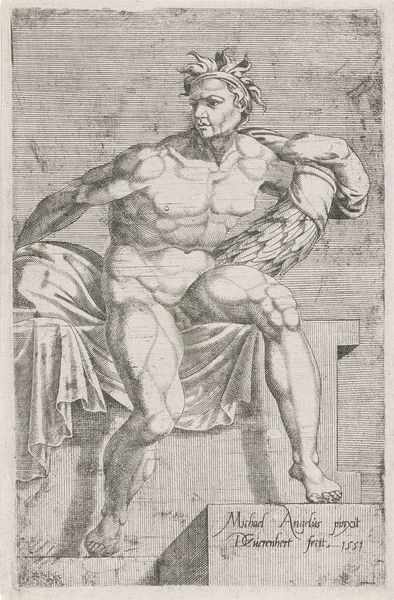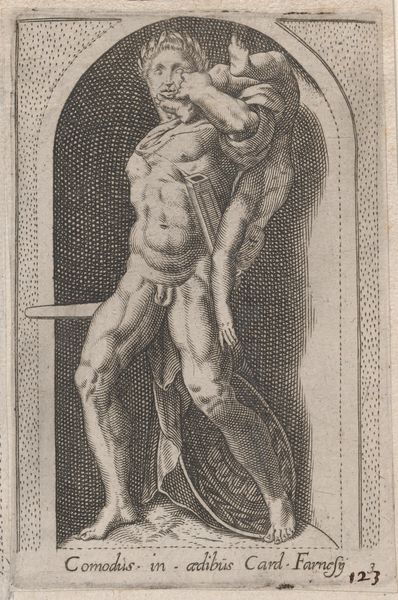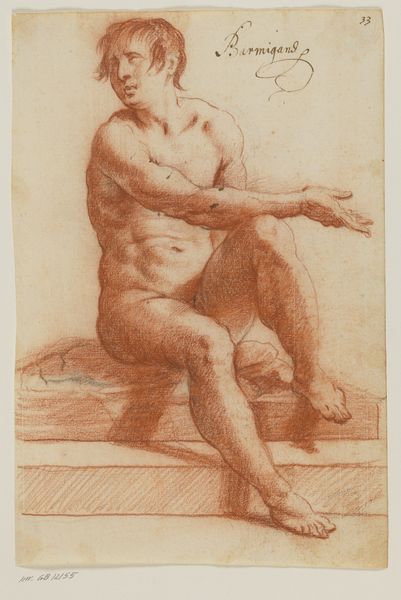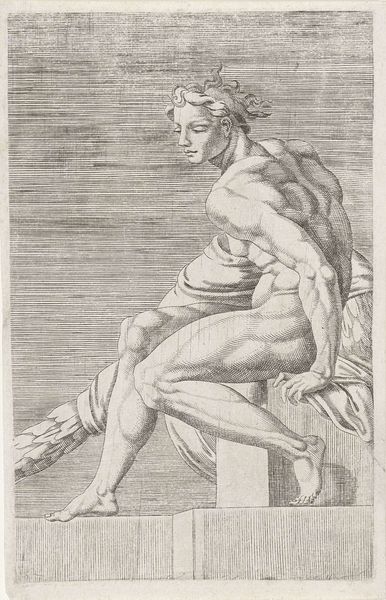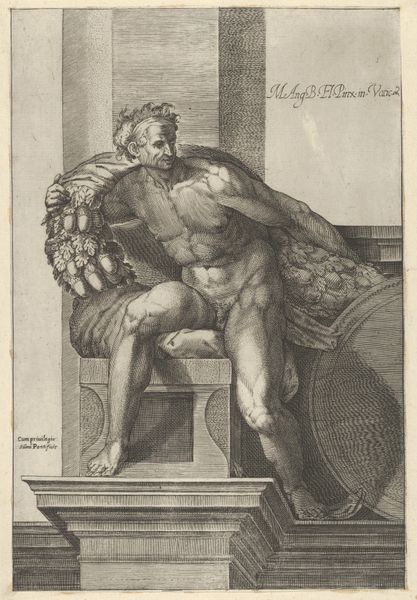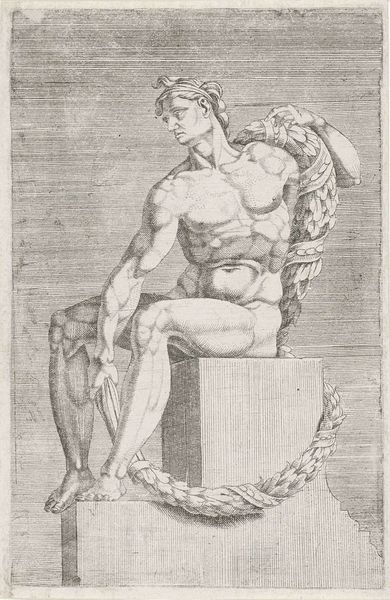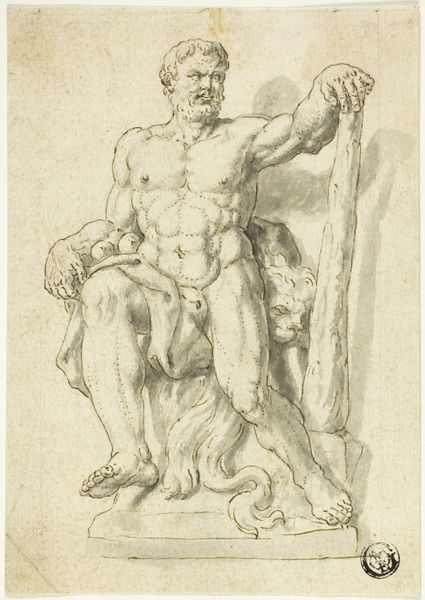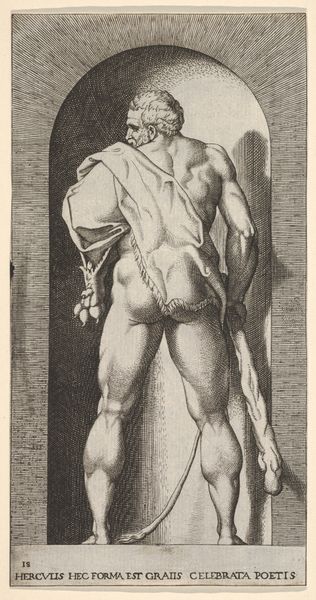
A naked man (Ignudo), seated facing left, holding a piece of fabric, after Michelangelo's 'The Last Judgment' fresco in the Sistine Chapel 1580 - 1590
0:00
0:00
drawing, print, engraving
#
drawing
# print
#
mannerism
#
figuration
#
history-painting
#
academic-art
#
nude
#
engraving
#
male-nude
Dimensions: Sheet: 12 3/8 × 8 1/8 in. (31.5 × 20.7 cm)
Copyright: Public Domain
Editor: This engraving by Cherubino Alberti, dating back to 1580-1590, depicts a nude male figure after Michelangelo's 'The Last Judgment.' The shading creates a somber mood, almost melancholic. What strikes me is how this image reinterprets Michelangelo. How do you interpret this work, particularly its symbolic weight? Curator: The echo of Michelangelo is undeniable, but Alberti isn’t simply copying. He's tapping into a pre-existing visual language. Consider the “ignudo”, the nude male figure: a powerful symbol of potentiality and perhaps even divine spark. Alberti, working within a Mannerist aesthetic, exaggerates the musculature, drawing attention to the body as a vessel. How does that "vessel" make you feel? Editor: It does seem idealized, like an attempt to embody perfection. Does that connect with how viewers in the 16th century might have understood this symbolism? Curator: Absolutely. Think of the renewed interest in classical antiquity during the Renaissance, where the male nude represented heroic virtue. However, post-Reformation, this could be read as an attempt to reconnect with humanity’s spiritual capabilities. Alberti also recontextualizes Michelangelo's figures, isolating it. Note how this absence of context transforms it from a mere figure in a grand scene into an icon of introspection and solitary being. Editor: So, the act of isolating the figure intensifies its symbolic meaning? It is interesting that Alberti focuses not just on physical beauty, but rather a symbol. Curator: Precisely. He presents it to us, inviting contemplation, ensuring that his symbols will transcend the constraints of space, religion, and time. Editor: This engraving highlights the cultural memory attached to symbols in art, their endurance and adaptation across generations. Curator: And reminds us how artists continually reshape and re-present symbols.
Comments
No comments
Be the first to comment and join the conversation on the ultimate creative platform.

